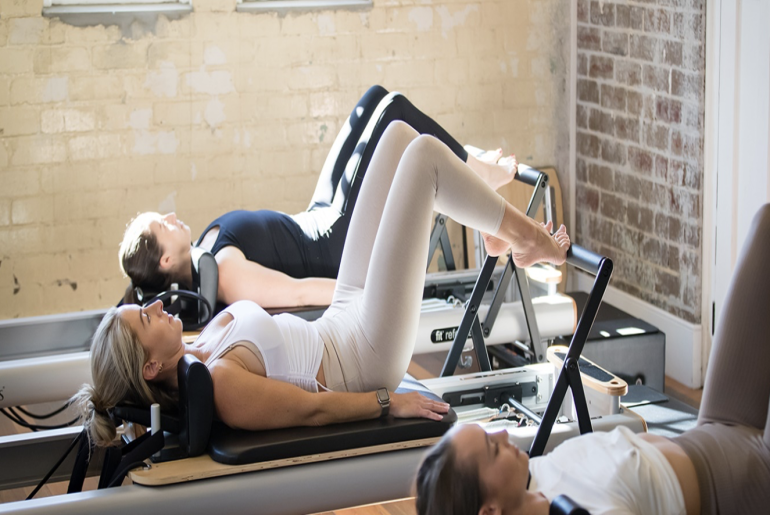While it’s tempting to lie back and settle in for the long haul after a serious injury or operation, it’s not always the best option for recovery. Physical therapy plays a vital role in supporting your body while healing and the right exercise could actually speed up your recovery journey. However, knowing which workout routine is best for your type of injury is important to prevent further damage to your body.
Your medical doctor or physiotherapist will advise you on which therapy is best for your rehabilitation. These include tailored Reformer Pilates Sydney locals often follow after an injury, exercises using therapy balls, plyometrics or specially designed wobble boards. Read on to find out how different physical therapy options can help you recover in a safe way that supports your overall wellbeing.
4 Rehabilitation Exercises to Support Your Injury Recovery Journey
1. Reformer Pilates
Pilates is often recommended for rehabilitating patients recovering from an injury or operation. It entails a range of exercises to strengthen and control core muscles, increasing spinal flexibility while improving postural alignment. Pilates is a popular choice for physical therapy involving low-impact exercises using different movements and equipment.
Reformer Pilates uses a reformer machine that offers additional resistance during exercising. Patients can do the workout in a horizontal position, reducing the strain on their lower bodies. Using the Pilates reformer machine aids the body in regaining muscular balance as well as overall body alignment.
Reformer Pilates is excellent for:
- Patients returning to the gym after an injury or battling repetitive strain injury.
- Those recovering from strokes
- Someone struggling MS or Parkinson’s Disease
2. Plyometrics
Plyometrics is a collection of exercises designed to strengthen muscles and improve agility and balance. This form of physical therapy is particularly useful for patients battling sport-related injuries. A workout routine includes jumping, hopping and bounding movements.
Low-intensity plyometric exercises incorporate the following:
- Hoop jumps, lunges and lateral hops to support recovery from ACL injuries.
- Overhead throws of medicine balls to heal and strengthen injured rotator cuff.
Using speed and force to build muscle power, plyometric training can reduce the risk of ACL or knee injuries. Plyometrics can be done in water to assist with the healing of damaged body tissues. The training workout also improves coordination and cardiovascular health.
3. Wobble Board Exercises
When used properly, wobble board exercises can help rehabilitate ankle and ACL injuries. It aids in building up muscle strength while improving mobility and overall balance. This equipment is a piece of round board with a ball at the base, in the centre.
Sometimes known as a balance board, this piece of equipment is effective for healing ankle sprains and is often used in sport training and yoga. The wobble board encourages the body to move in different ways, rehabilitating and strengthening shoulder joints, knees and hips.
Physiotherapists use the wobble board in different ways when rehabilitating patients. These include:
- Sitting on the floor and placing your feet on the board while rotating it a number of times
- Standing on the board with both feet and doing gentle rotations while holding onto a chair
- Balancing on the board as long as possible without moving it or letting the edges touch the ground
- Standing on the board with one foot and balancing as long as possible
Most gyms have wobble boards available but make sure you use it correctly to prevent further injuries.
4. Therapy Ball Exercises
Therapy balls are often used during injury rehabilitation to strengthen the body while regaining balance. This form of physical therapy is gentler than some other forms of rehabilitation exercise since it prevents muscular and spinal strain during movements.
Therapy ball exercises are effective for back injury rehabilitation and can also aid in reducing further strain on ACL-related injuries. They help increase core strength while increasing spinal flexibility and posture stability. These accessories are even used by occupational therapists to improve sensory processing in children.
Other ways therapy ball exercises are beneficial include:
- Rehabilitation and strengthening of hamstrings
- Reducing lower back pain
- Assisting the elderly with balance and mobility
- Reducing pain associated with sciatica
This form of physical therapy is used by physiotherapists as well as in a gym with personal trainer facilities. Therapy balls are used during Pilates classes as well as in other workout routines for both injury prevention and rehabilitation.
Final Thoughts
Rehabilitation exercises encouragesthe body to heal while preventing further strain or injury. They’ve been carefully designed to aid in the recovery of different injuries, using a range of equipment and movements. It’s important to always get the advice of wellness experts trained to deal with rehabilitation so you don’t cause more damage to your body.
The benefits of rehabilitation exercises are numerous including inflammation reduction, pain relief, improved mood and better anxiety management. They prevent further injuries by improving balance and coordination while boosting bone health and your immune system. If you’re serious about healing your body, consider physical therapy for physical recovery and even general wellbeing.

